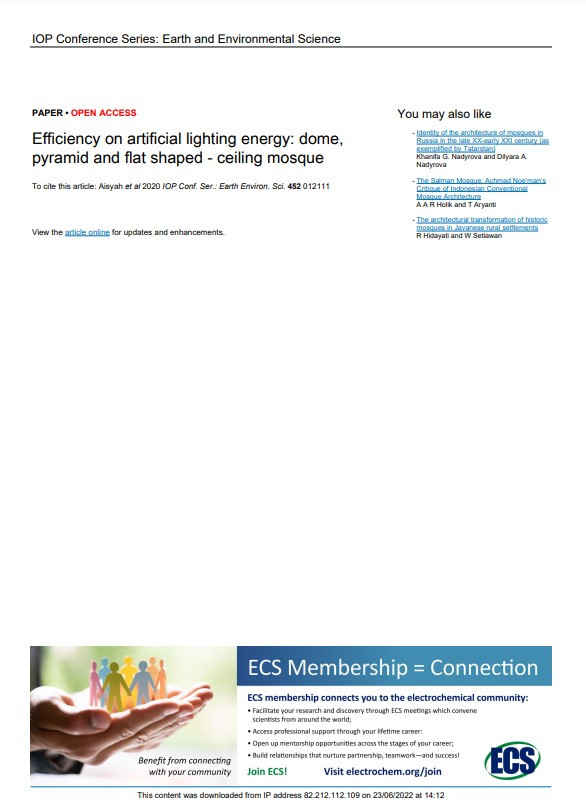
Indonesia is the largest Muslim country in the world, around 87.2% of its population are Muslim. Mosque, as the center of Muslim activities, has important roles for Muslim’s physical and social aspects. Therefore, it causes a massive addition of mosque buildings in Indonesia. Mosques are mostly built in spacious areas that increase the possibility of extravagance in lighting. This study explores the different types and configuration patterns of artificial lighting to be applied in the different shapes of mosque ceiling and how they relate to energy efficiency. Using the software simulation DIALux, this study aimed to find the best artificial lighting types and configuration patterns that possible for most efficient energy in terms of its illuminance distribution quality. Al Musyawarah Mosque, al Falah Mosque and Sunda Kelapa Mosque in Jakarta are the sample chosen for this study. Those mosques were chosen because their ceiling shapes represent the shape of Indonesian mosque ceiling in general: dome, pyramid and flat-shaped ceiling. As the result, a basic guideline for efficient lighting configuration in different shaped ceiling mosques is proposed.
Pandjaitan, T. H., A. D. Ismoyo, and O. C. Dewi. “Efficiency on artificial lighting energy: dome, pyramid and flat shaped-ceiling mosque.” In IOP conference series: earth and environmental science, vol. 452, no. 1, p. 012111. IOP Publishing, 2020.
I agree to the terms outlined below:
You agree to upload and assign Mosqpedia Database the rights to use the content worldwide and in perpetuity across all current and future media platforms. Mosqpedia Database may edit, copy, adapt and translate your contribution.
The content will be distributed under the Creative Commons Attribution-Deed – Attribution-NonCommercial-NoDerivatives 4.0 International – Creative Commons
All data will be stored in line with data protection regulations.